Noggins for Noshing?
Animal diets, skull shapes and the limits of convergent evolution
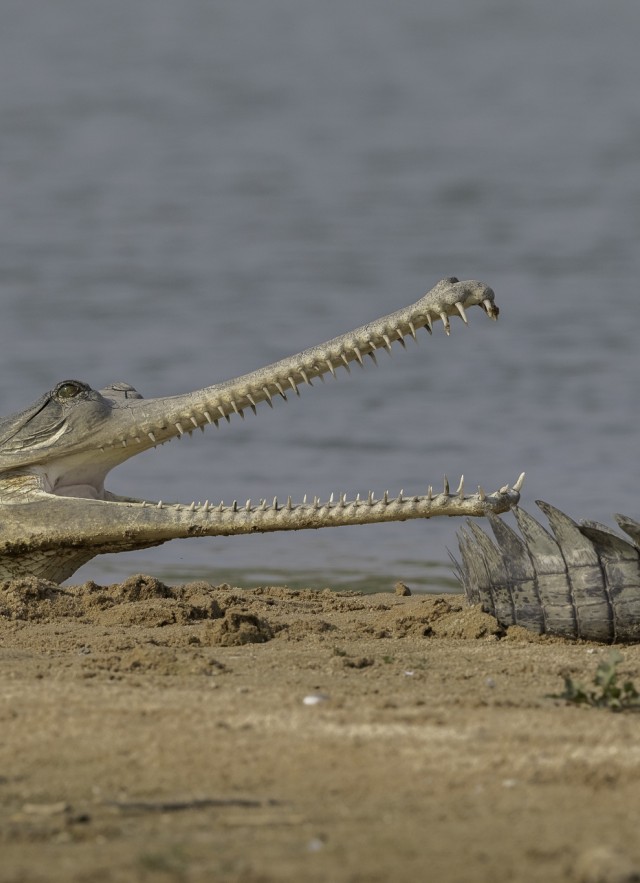
Evolution shapes all life on Earth, and when animals live in similar ways or in similar environments, that shape can be, well, very similar. That’s convergent evolution. Picture the tubular shapes and dorsal fins shared by dolphins (mammals, playful, echolocating mammals) and sharks (fish, egg-laying, sniffing out blood), bodies optimized to outswim prey underwater.
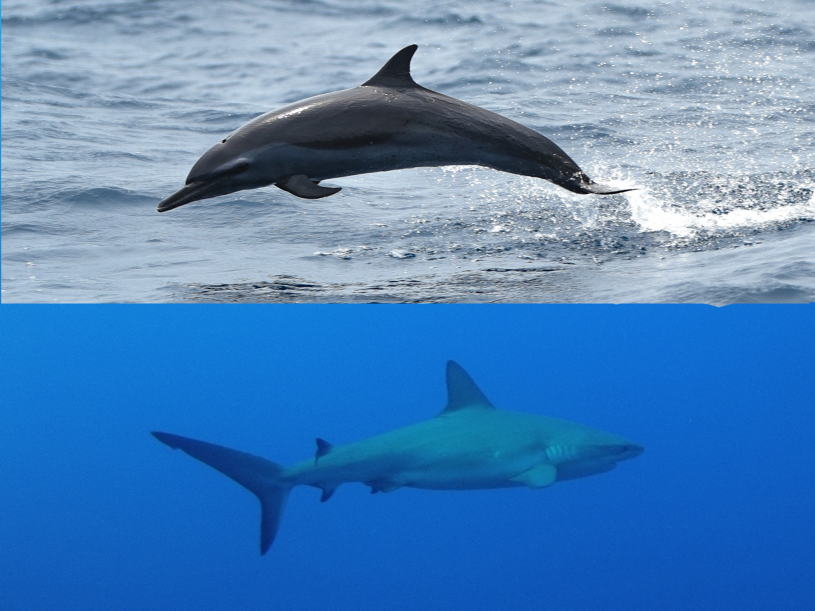
Reef Shark photograph by iNaturalist user henrya Pantropical;
Spotted Dolphin photograph by iNaturalist user ahmeddomarr
But how big a role does diet play in shaping convergent craniums? At NHM’s Dinosaur Institute, Postdoctoral Research Scientist Dr. Keegan Melstrom had an idea about how to answer that question, documented in a new paper published in the journal Royal Society Open Science (read it here).
“A lot of previous research has discovered that diet plays an important role in determining skull shape in relatively closely related animals, but surprisingly little work has looked at animals that are more distantly related. In animals that live in the water, it turns out that this pattern holds up, and we sought to test if the same was true in animals that lived on land,” says Dr. Melstrom.
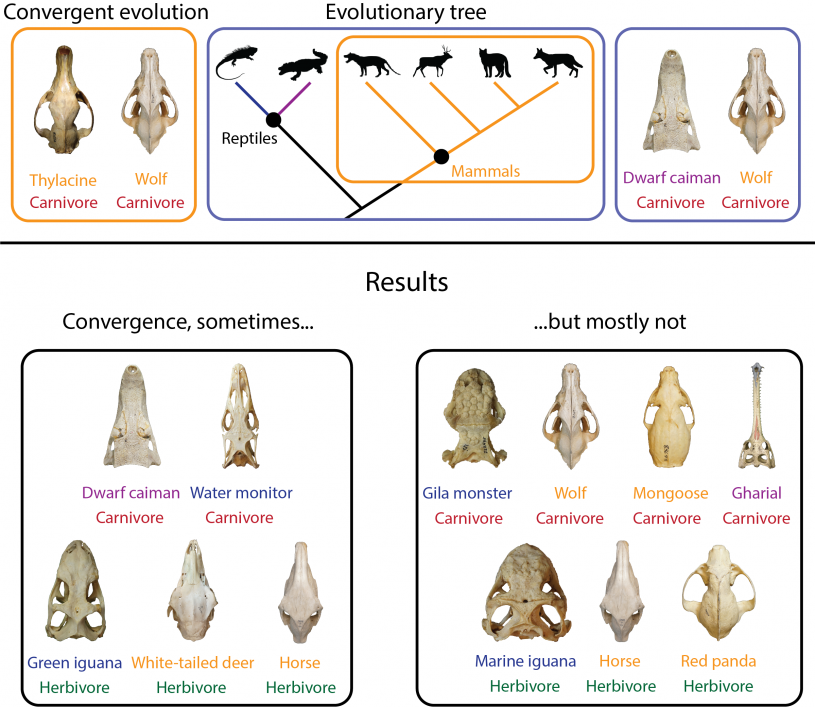
Melstrom and his colleagues looked for answers in skulls. A lot of skulls. They scoured natural history collections like NHM’s Herpetology, photographing and measuring 156 species: 89 species of mammals, 20 species of crocodylians, and 47 species of lizards, to be precise.
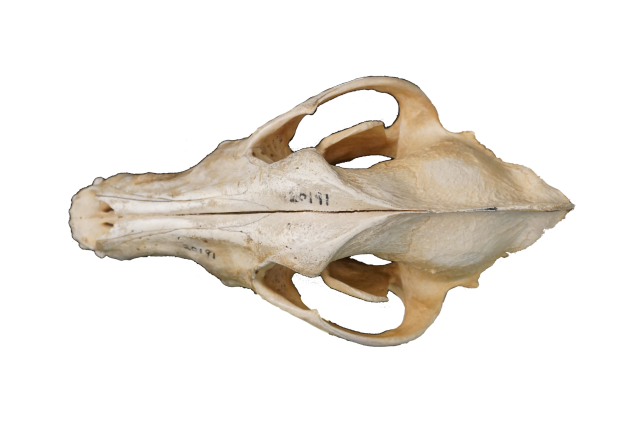
Photograph by Dr. Keegan Melstrom
The incredible diversity of skull shape within amniotes (the group made up of birds, mammals, and reptiles) is thought to reflect their incredible diversity in diet, and to explore the possible connections within these disparate groups. A gray wolf skull is pictured here.
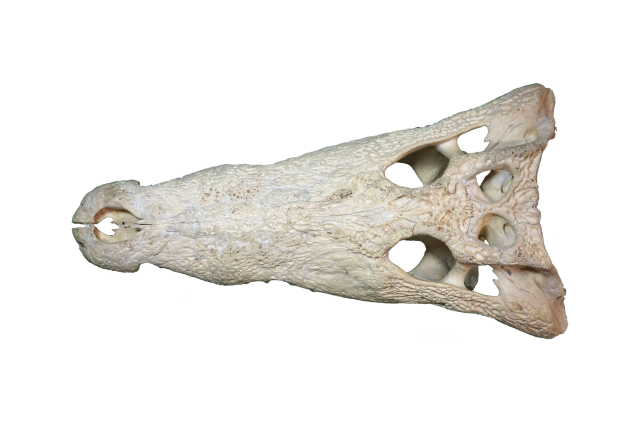
Photograph by Dr. Keegan Melstrom
This Nile crocodile and the previously pictured gray wolf share elongated snouts optimized for meat eating.
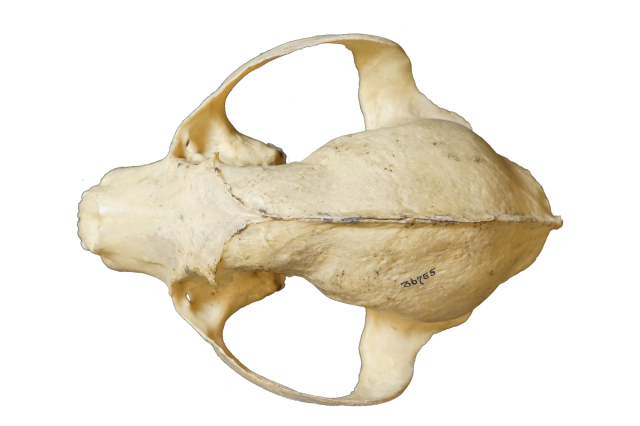
Photograph by Dr. Keegan Melstrom
This red panda skull is short-snouted, reflecting the noggin needed for noshing on a diet of roughly 2/3rds bamboo.
1 of 1
The incredible diversity of skull shape within amniotes (the group made up of birds, mammals, and reptiles) is thought to reflect their incredible diversity in diet, and to explore the possible connections within these disparate groups. A gray wolf skull is pictured here.
Photograph by Dr. Keegan Melstrom
This Nile crocodile and the previously pictured gray wolf share elongated snouts optimized for meat eating.
Photograph by Dr. Keegan Melstrom
This red panda skull is short-snouted, reflecting the noggin needed for noshing on a diet of roughly 2/3rds bamboo.
Photograph by Dr. Keegan Melstrom
ARE YOU WHAT YOU EAT?
The elongated snouts that help both canids and crocodylians snarf copious amounts of meat suggested that the diet could play a role in shaping skulls, even across 300 million years of evolution, but Melstrom and his colleagues needed to compare.
By compiling data on aspects of skull shape and key aspects like snout length and the placement of eye sockets (among other things), Melstrom and his colleagues were able to quantify the similarities and differences between these diverse species.
“We measured how the location of fundamental features of animal skulls (eye sockets, jaw joints, the tip of a snout) compare to one another. Understanding how these are similar (or different) to one another allowed us to test the effects of things like diet, size, and evolutionary relationships on skull shape,” says Dr. Melstrom.
The study found that both diet and size affect skull shape, but the vast majority of species retain unique aspects of their ancestral skull plan, limiting the morphological potential of distantly related animals to converge despite similar diets.
Additionally, some animals develop unique skull shapes to eat similar diets.
“We found that despite some animals independently converging on similar skull shapes related to their diet, distantly related animals generally don’t. There are at least two reasons for this. The first is because mammals, lizards, and crocodylians are working from such different ancestral skull shapes that convergence in shape is not the optimal way to consume a particular diet. Secondly, when it comes to evolution, there is more than one way to solve a problem, so different groups often settle on different shapes to achieve a particular function,” says Dr. Melstrom.
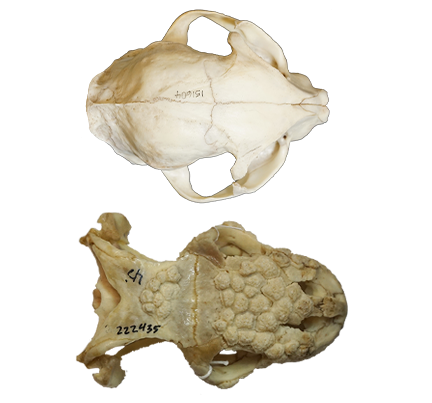
Some parallel changes in cranial shape occur in clades with distinct evolutionary histories but similar diets. For example, some carnivorous lizards (like the Gila Monster) and mammals independently evolved relatively short snouts to help maximize bite force, but lizards can’t seem to reach the same levels of short-snoutedness as some mammals.
SNOUT OF CONTROL
The researchers found a lot of variation among species centered around the snout—ranging from the extremely elongated snouts of crocodylians to short, wide snouts of mammals.
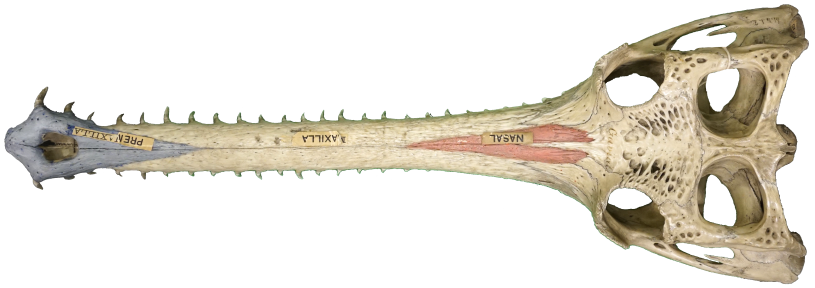
“It’s remarkable how much variation exists in the snout in our sample of animals, from the incredibly short face of bats to the extraordinarily long, narrow snout of the gharial.” says Dr. Melstrom. The distinctly narrow, flattened skulls of crocodylians reflect their specific lifestyle—ambushing terrestrial prey from the water—and helps produce high bite forces in aquatic conditions. Animals that take to the air and sea (like bats and marine mammals) often have the most extreme cranial adaptations, suggesting that exploiting these environments requires more significant cranial modification.
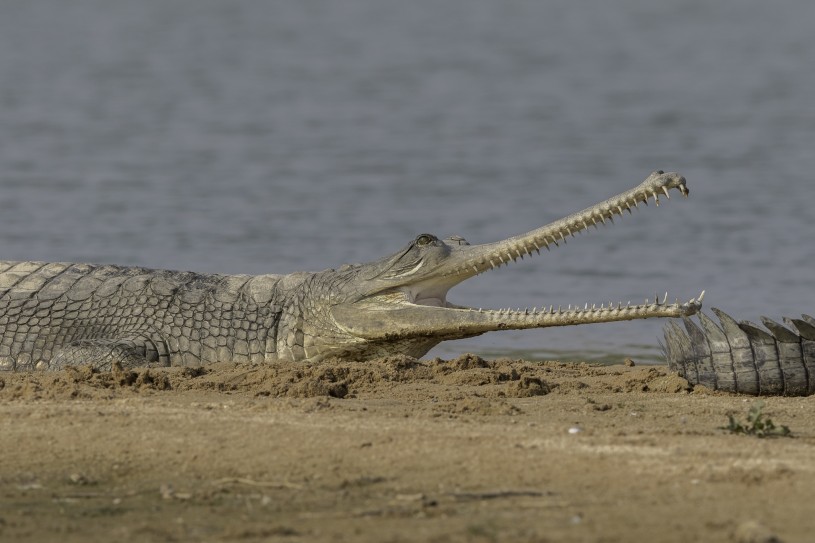
“Our study really brings home the fact that the shape of an animal’s skull is a complex mix of what it’s eating, its evolutionary history, its size and growth among a myriad of other factors. And because of this complexity, we can use these pieces of evidence to tell us about all sorts of aspects of extinct animals,” says Dr. Melstrom.